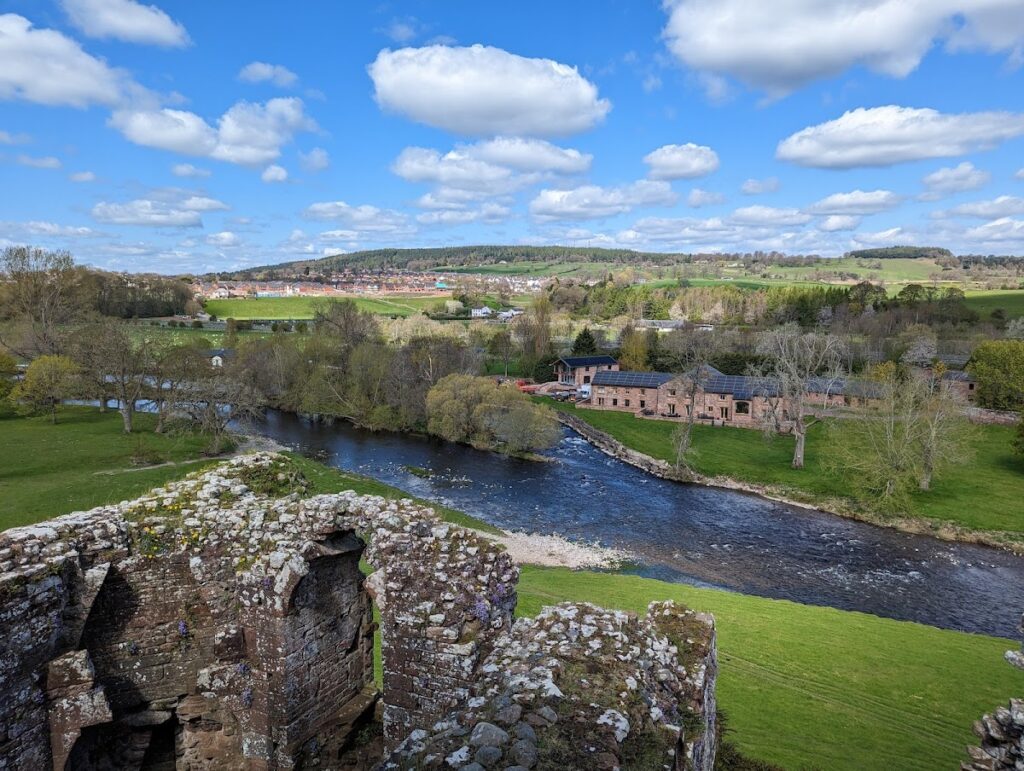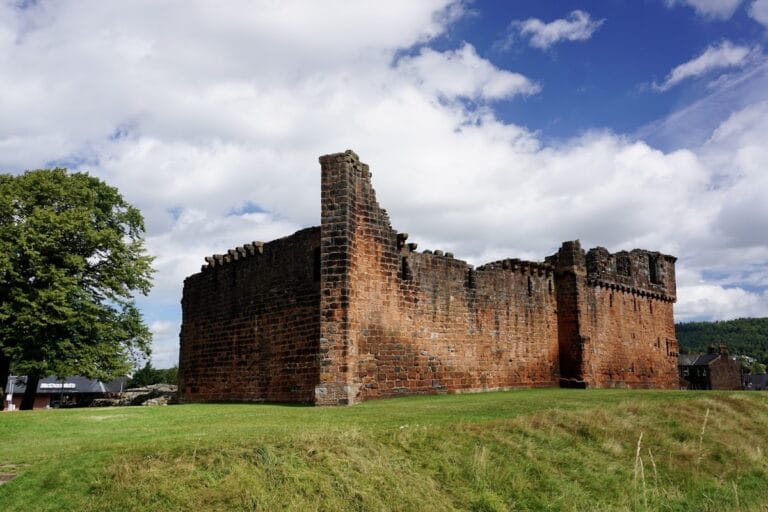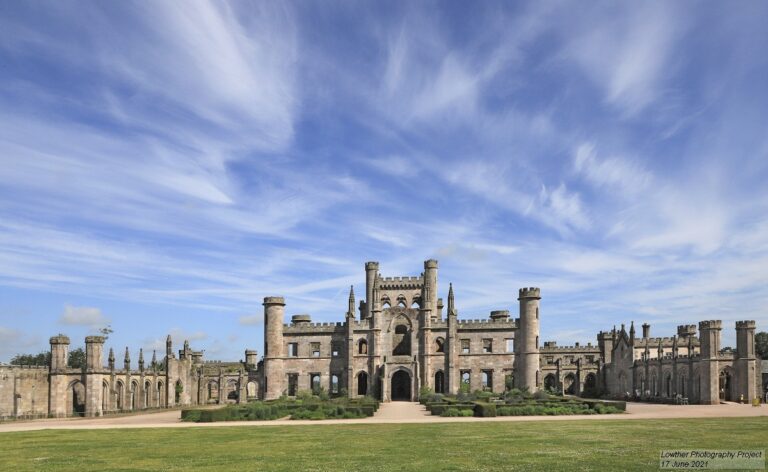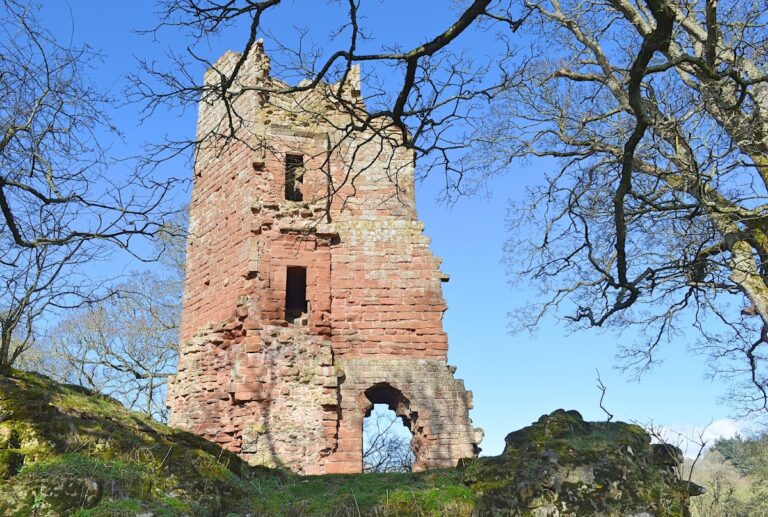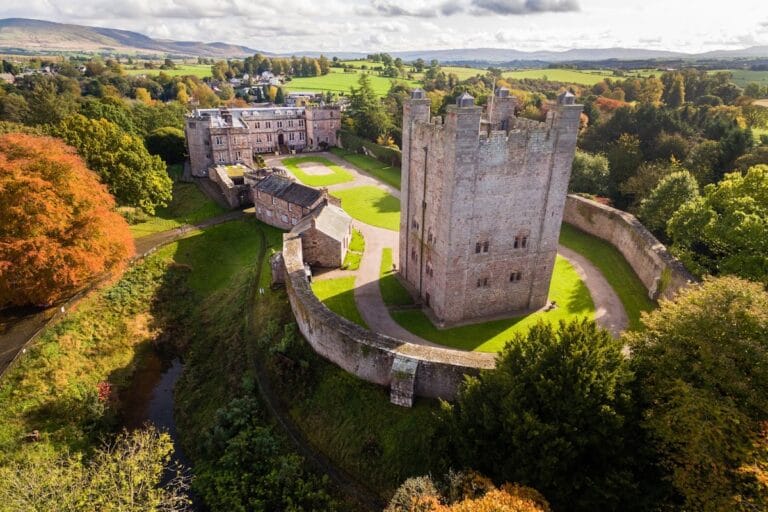Brougham Castle: A Historic Fortress in England
Visitor Information
Google Rating: 4.6
Popularity: Medium
Google Maps: View on Google Maps
Official Website: www.english-heritage.org.uk
Country: United Kingdom
Civilization: Unclassified
Remains: Military
History
Brougham Castle stands near Penrith in England, occupying the site once used by the Romans for their fort known as Brocavum. Established in the early 13th century by Robert I de Vieuxpont, a notable landowner loyal to King John, the castle was built to command the strategic meeting of the Eamont and Lowther rivers.
Following its foundation, the castle remained in the hands of the Vieuxpont family until the mid-13th century, when Robert de Vieuxpont’s grandson fell from favor and was declared a traitor in 1264, resulting in the confiscation of the estate. However, by 1269, the property was reestablished under the Clifford family through marriage. The Cliffords soon reinforced the castle’s role as a frontier fortress, particularly during the outbreak of the Wars of Scottish Independence in 1296. Robert Clifford, 1st Baron de Clifford, replaced earlier wooden defenses with robust stone walls and erected a substantial gatehouse. This military upgrade was significant enough to warrant a visit by King Edward I in 1300.
The castle’s history throughout the 14th century was marked by political turbulence. The Clifford family’s possession was interrupted by royal interventions, including the execution of Roger Clifford in 1322 and temporary seizure by the crown. Ownership was restored under the reign of Edward III. Despite this, the castle suffered an attack in 1388 when it was captured and looted by Scottish forces.
As the Cliffords acquired other properties, most notably Skipton Castle, Brougham gradually declined in importance. By the late 16th century, it was no longer a main residence and had fallen into a poor state of repair under George Clifford, 3rd Earl of Cumberland. The early 17th century saw some restoration efforts that allowed King James I to stay there in 1617. Later, Lady Anne Clifford, who inherited the estate in 1643, undertook extensive repairs, transforming Brougham Castle into a more comfortable country house and laying out a garden over parts of the former Roman fortification.
After Lady Anne’s death in 1676, the castle’s decline resumed. By 1714, Thomas Tufton, 6th Earl of Thanet, sold off the castle’s furnishings, which led to its abandonment. Over time, the castle’s stones were quarried for building material by the neighboring village.
In later centuries, Brougham Castle attracted the attention of Romantic artists and poets. J. M. W. Turner painted its ruins, and William Wordsworth referenced the castle in his autobiographical poem The Prelude and composed a song celebrating the Clifford family’s restoration efforts. In the 20th century, Brougham was recognized formally as a monument of national importance. Its guardianship was assigned to the Office of Works in 1927, followed by extensive repair work during the 1930s. Today, the castle is preserved as a historic site, having undergone thorough archaeological study including a detailed survey in 1984.
Remains
The castle occupies an irregular polygonal area laid out on terraced ground sloping toward the north, near the junction of two rivers. Originally, a moat encircled the east, south, and west sides, spanning up to 15 meters wide and around 3.4 meters deep; although now dry, it likely provided critical defense when filled with water.
Entry to the castle was controlled through a prominent three-story gatehouse complex built in the early 1300s by Robert de Clifford. This comprised two gatehouses facing each other with a courtyard between them. The inner gatehouse, still standing at about 12.5 meters high, features a vaulted passage on the ground floor equipped with a portcullis—a heavy gridded door that could be lowered to block attackers—and a secret small door, called a postern gate, on its north side. Both gatehouses housed large rooms above the entrance, historically used for living quarters. The outer gatehouse rises to 14.5 meters and contained a dungeon below, while a guardroom occupied the ground floor on the northern side. It is believed that defensive openings called machicolations once crowned this gatehouse, allowing defenders to drop objects on attackers, although these features no longer survive.
Attached to the gatehouse is the castle’s keep, dating from the 13th century. This imposing, roughly square tower reaches nearly 20 meters tall, though originally it was slightly higher. Inside, a spiral staircase in the northeast corner connects all floors, each comprising a single large room. The northwest corner houses a garderobe, a medieval toilet. Access was gained through a first-floor entrance via a small forebuilding on the east side. The ground floor likely served for storage, while the first floor combined hall and guard functions. Upper floors contained rooms for the lord and his household. An additional fourth floor was added in the early 14th century, reflecting enhancements during Clifford ownership.
South-east of the keep sits a stone hall erected in the late 14th century by Roger Clifford, replacing an earlier timber one. This hall contained large windows shielded by heavy wooden shutters and served primarily as a dining area for the castle’s garrison. Adjacent in the south-east corner is the kitchen, essential for preparing food, while along the southern wall are further lodgings, a water well, and a chapel also installed by Roger Clifford, indicating the integration of religious facilities within the castle complex.
The south-west corner of the castle is marked by the Tower of League, a four-story square tower constructed around 1300 by Roger Clifford. Each level consists of a large room equipped with a fireplace and a garderobe, suggesting it was intended to house distinguished guests. Its design incorporated defensive features allowing archers stationed there to fire upon enemies who had breached the gatehouse, providing layered protection.
Surrounding the castle, initial earthworks of banks and a timber fence were eventually replaced by sturdy stone curtain walls during the 14th century. These defenses helped secure the site on multiple fronts.
Beyond the medieval structures, the grounds also preserve remnants of the original Roman fort earthworks beneath the castle and a 17th-century walled garden. This garden was enclosed by a stone wall over three meters high, constructed by Lady Anne Clifford. Excavations in the garden area revealed Roman artifacts such as coins and altars, highlighting the continuity of occupation and reverence for the site’s ancient past.
Today, Brougham Castle survives largely as it appeared following extensive repairs carried out in the 1930s. It remains one of the best-documented and studied castles in the region, with well-preserved ruins illustrating its evolution across centuries. A museum on site provides further interpretation, reflecting the castle’s layered history and archaeological richness.



